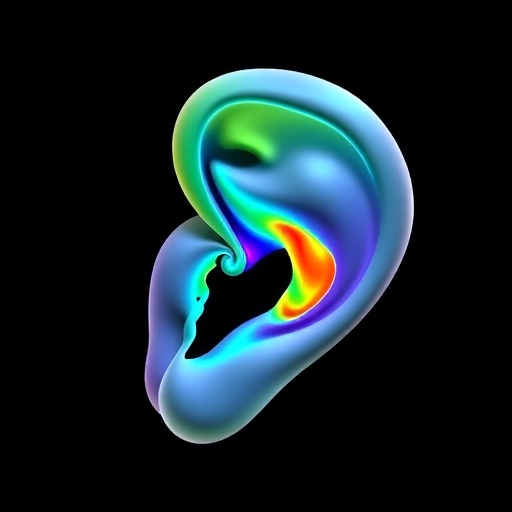A new study led by Massachusetts General Hospital (MGH) investigators finds that radiation therapy may increase the uptake of therapeutic nanoparticles by glioblastomas, raising the possibility of using both growth-factor-targeted and immune-system-based therapies against the deadly brain tumor. The team describes how pretreatment with low-dose radiation increased delivery to tumors of nanoparticles carrying small interfering RNA (siRNA) molecules and significantly improved survival in a mouse model of glioblastoma.
“We found that radiation therapy primes brain tumors for enhanced uptake of nanotherapeutics, allowing us to develop a targeted nanoparticle to deliver siRNAs for both immune checkpoint and targeted therapy against the most aggressive type of brain tumor,” says Bakhos Tannous, PhD, of the Neuro-Oncology Division in the MGH Department of Neurology, senior author of the report published in ACS Nano. “A brief burst of radiation was able to increase uptake of the nanoparticle up to five-fold, enhancing the effects of targeted therapy, activating the immune response at the tumor site and prolonging survival.”
While up to 60 percent of glioblastomas express the EGFR growth factor, a molecule used in targeted therapies against several types of cancer, EGFR-targeted therapies have had little success against the brain tumors. Similarly immunotherapies directed against immune checkpoints such as CTLA-4 and PD-L1 have promising results against many cancers but not yet against glioblastoma. Some studies have suggested an association between EGFR activation and increased PD-L1 expression, raising the possibility that targeted both could increase the antitumor effects.
In order to deliver siRNAs targeting both EGFR and PD-L1 to brain tumors, the researchers developed a solid lipid nanoparticle guided by a tumor-targeting peptide called iRGD, which binds to a molecule present on blood vessels lining the tumor, allowing it to penetrate both the blood-brain and blood-tumor barriers. Factors such as the small size and positive charge of this nanoparticle allow it to penetrate the blood-brain barrier; and like other solid lipid nanoparticles, its low cost, stability, biodegradability and ease of manufacture make it an attractive option, explains Gulsah Erel-Akba, PhD, of MGH Neuro-Oncology and Izmir Katip Celebi University in Turkey, the first author of the study.
In order to test whether pretreatment with low-dose radiation therapy would increase the therapeutic effectiveness of the nanoparticle, the investigators compared the results of four strategies in glioma-bearing mice.
- Treatment with either radiation alone or with a nanoparticle containing a ‘scrambled’ siRNA molecule had no effect on either tumor growth or survival of the mice.
- Administering an iRGD-guided nanoparticle carrying EGFR/PD-L1-targeting siRNAs without radiation pretreatment had a moderate effect on tumor growth and increased survival from 21 to 24 days.
- Radiation pretreatment plus a siRNA-carrying nanoparticle without an effective guiding peptide also had a moderate effect on both tumor growth and survival.
- Radiation pretreatment plus an iRGD-guided nanoparticle carrying the EGFR/PD-L1-targeting siRNAs had the greatest benefit, increasing survival to 38 days.
Examination of tissue from the tumor sites found that the combined therapy decreased expression of PD-L1 and increased recruitment of CD8 T cells, indicating an increased antitumor immune response.
An associate professor of Neurology at Harvard Medical School, Tannous explains that radiation is known to counteract the immunosuppressive glioblastoma microenvironment in several ways, suggesting a dual action of both increasing nanoparticle delivery and enhancing the antitumor immune response. While aspects such as the optimum dose and timing of radiation pretreatment have yet to be determined, he notes, the same approach could be used to treat other aggressive tumors with siRNAs targeting different molecular pathways.
###
Additional co-authors of the ACS Nano paper are Litia Carvalho, PhD, Tian Tian and Max Zinter, MGH Neuro-Oncology; Hasan Akbaba, PhD, and Ayse Gulten Kantarci, Ege University, Ismir, Turkey; Pierre Obeid, University of Balamand, Tripoli, Lebanon; E. Antonio Chiocca, MD, PhD, Brigham and Women’s Hospital; and Ralph Weissleder, MD, PhD, MGH Center for Systems Biology. Support for the study includes National Cancer Institute grant P01 CA069246, National Institute for Neurological Disorders and Stroke grant P30 NS04776, and a Scientific and Technological Research Council of Turkey scholarship.
Massachusetts General Hospital, founded in 1811, is the original and largest teaching hospital of Harvard Medical School. The MGH Research Institute conducts the largest hospital-based research program in the nation, with an annual research budget of more than $925 million and major research centers in HIV/AIDS, cardiovascular research, cancer, computational and integrative biology, cutaneous biology, genomic medicine, medical imaging, neurodegenerative disorders, regenerative medicine, reproductive biology, systems biology, photomedicine and transplantation biology. The MGH topped the 2015 Nature Index list of health care organizations publishing in leading scientific journals and earned the prestigious 2015 Foster G. McGaw Prize for Excellence in Community Service. In August 2018 the MGH was once again named to the Honor Roll in the U.S. News & World Report list of “America’s Best Hospitals.”
Media Contact
Katie Marquedant
[email protected]
http://dx.




